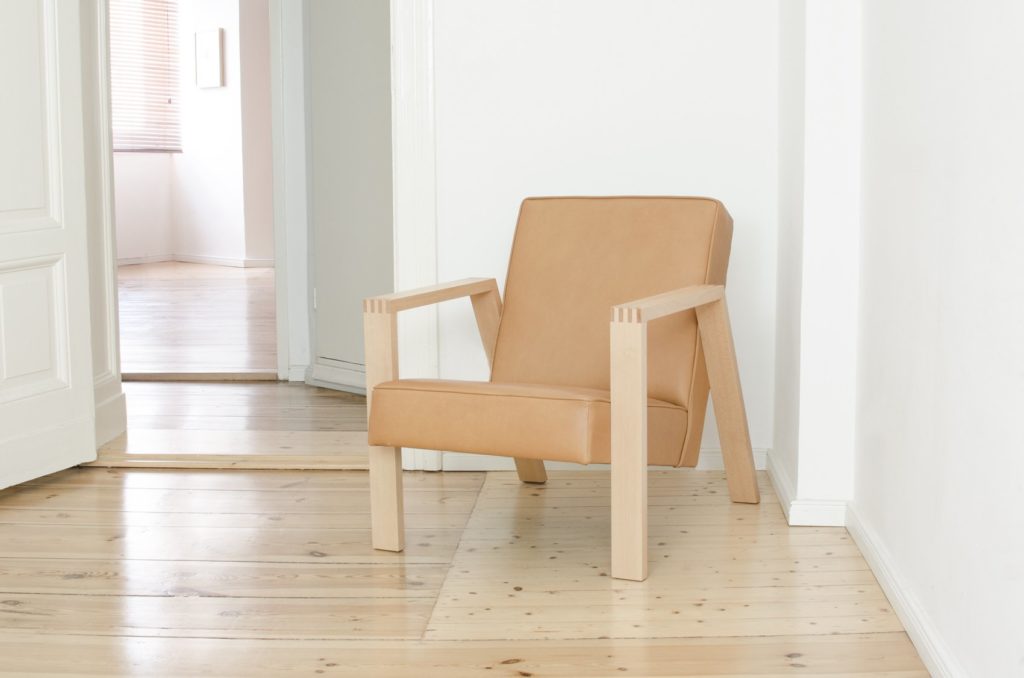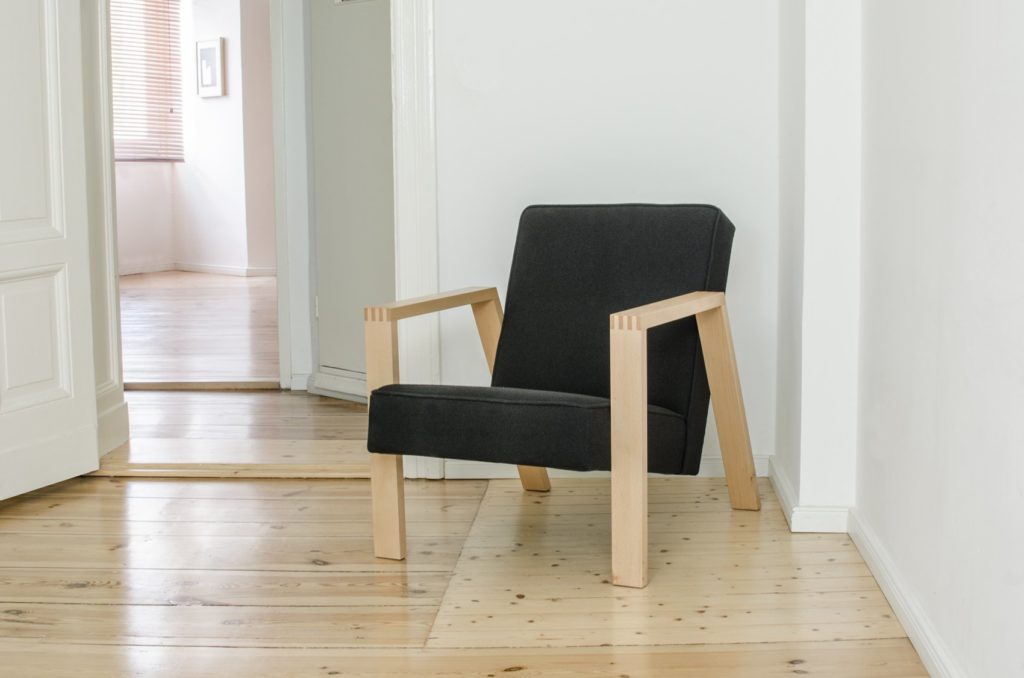With the redesign of the Pontier N°01 armchair not only did a high-quality armchair emerge but I also took a journey into my family’s past. In the newly discovered stories, sketches and scale-models, the work of my grandfather came to life and gave me a better understanding of his visual style and design identity.

Growing up, I recall our home was filled with furniture and objects designed by my grandfather. They were not discarded over time but passed on to the next generation. They kept me company during my childhood and remind me of home. They represent my grandfather’s idea of homeliness: durable, uncompromising, comfortable and made with love for detail. That’s what makes this furniture so special.
My grandfather, Adrianus Jacobus Pontier was born 1922 in Maasdijk (the Netherlands). As a son of a preacher it was expected that he would become a minister, but he chose a different path. After the war, he worked in a furniture store in Rotterdam and realized he wanted to be an interior architect / designer. Soon after, he began his studies at the Royal Academy of Art in The Hague. In 1950, he graduated and opened his own architect firm Ad Pontier in Maasdijk, while remaining attached to the Academy as a teacher for the design course.

One of his largest projects involved setting up a number of Dutch pavilions at the 1958 World Fair in Brussels, in which the famous Dutch designer Gerrit Rietveld was also involved. He later co-designed an innovative glass greenhouse home in Boskoop (NL) with the Dutch artist Toon Hendriksen, a building far ahead of its time.
Unfortunately I never knew my grandfather personally. He passed away in 1968 at the age of 45. Yet it is amazing to realize that we have many interests in common. Having felt a special bond with the creations of my grandfather, I toyed for many years with the idea of doing something with his furniture. In 2015, I began the development of the first prototype.

Unfortunately, no original drawings of the Pontier N°01 chair were preserved. The chair had to be completely re-measured and drawn. Through this intensive process, I started seeing and recognizing style-cues that I had not noticed before. There were also several occasions where the angles and dimensions of the original chair matched my expectations exactly. I collaborated on this project with Hans, the Tischlermeister (wood worker). We analyzed the original construction and adapted the design to modern production and quality standards.

The original chair was much smaller being clearly made for the ’50s. Testing it with family and friends from different generations clearly showed that it was a bit on the small side. The prototype with slightly larger dimensions supports a much better posture. The old-fashioned spring construction has also been replaced by high quality, durable foam, providing even greater comfort. I replaced the original corduroy with a modern high-quality wool fabric by Kvadrat.
The Danish brand Kvadrat’s Molly 2 series is designed by Åsa Pärson, and is woven exclusively with hand-selected wool yarn from sheep in Norway and New Zealand. Un-dyed wool is the basis of the weaving patterns of the Molly 2 series. Each roll of the fabric is unique, without the use of chemicals and gives the redesigned Pontier N°01 chair its own identity.
Recently we also introduced a pure aniline leather version and a colorful Hallingdal 65 wool fabric from Kvadrat version.

The intensive design and development process made this a very personal project for me. My grandfather’s visual style and design identity became apparent through the intricate process of de-constructing the Pontier N°01 chair and transforming it for today’s interior.



